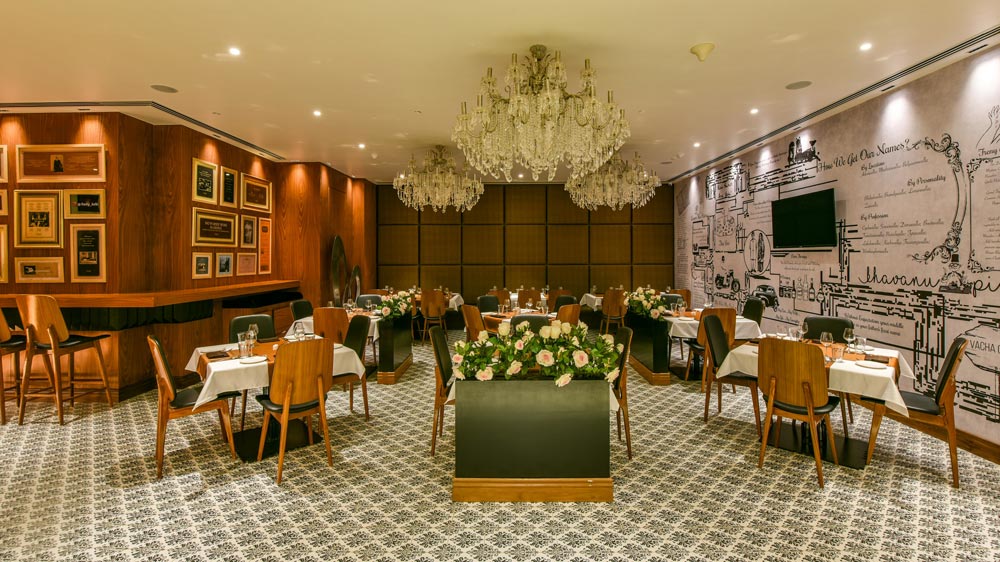
Food is maybe the only universal thing that really has the power to bring everyone together. No matter what culture, everywhere around the world, people get together to eat – Award winning restaurateur, Guy Fieri said.
Cultural-themed restaurants have become a very important part of the restaurant business, today. In the internet revolution that we live amidst, we experience an environment that actively shares ideas and concepts. After the internet, one of the biggest influencers of depicting different cultures is restaurants, through their commitment to providing authentic, cultural food. As a result, the act of consuming food has transformed from being a simple necessity to an entire experience of its own. Restaurants today aren’t just designed to serve tasty food, but also to provide a holistic and novel experience. The creation of this experience starts from the very design of the restaurant, which aids customers in beginning their cultural journey, through their eyes. Here are the different aspects of restaurant design that needs to be considered, to create a well-rounded cultural experience:
Colour Scheme
Almost every culture has a definite colour scheme associated with them. For example, the Middle East is often depicted in rich hues of maroon, purple, and gold, while European cultures like Greek, are depicted through whites and blues. Thus, it is important to pick the right colour schemes for your restaurant design that defines your theme. From your walls to your furniture, it is important to maintain the same colour scheme throughout the restaurant, so as to not confuse the customers with too many ideas. Additionally, colours also have a part to play in psychology, with every colour evoking different emotions. Therefore, colours like red or yellow, which are busy and energetic, would be bad choices for a fine dining restaurant, but a great idea for a fast food service. Thus, make sure that your theme, form of restaurant, and colour scheme, are in alignment.
Seating and other vital furniture
Talking about colour schemes, another aspect of design that plays an important role in the experience a restaurant provides, is the materials utilised throughout the restaurant. It is always a great idea to source materials native to a particular region, to have a true representation of the local culture. Furniture with intricate carvings from local artists, is a small, but highly effective way to incorporate authenticity into the design. Additionally, there is a notable difference in the way people consume food in different cultures. For example, Arabic cultures often prefer sitting on low-seating, with plush mattresses and couches, while Parisian cafes usually have outdoor seating, featuring handcrafted wooden chairs. Some communities also believe in having meals as a community, and enjoy meals on long, shared tables. Thus, it is important to identify different eating traditions in your culture, and design the seating plan accordingly, with the appropriate furniture.
Kitchen Design
While the visual appeal of the front-end of a restaurant is very important to ensure customer satisfaction, what is also important is to have functionality and efficiency on the back-end of the restaurant, i.e., the kitchen. Different cultures use different forms of cutlery, utensils, and cooking processes, for cooking and serving the best food. Thus, it is important to understand the functionality of the kitchen space, in this aspect, to be able to cook quickly and efficiently, while maintaining the authenticity of the food. For example, large woks are an integral part of Chinese restaurants, while multiple efficient grills are extremely important in the European cultures. Certain specialty dishes like Tandooris in the Mughal culture, or Momos in the Asian cultures, can only be made through specific equipment, for the best results. Thus, the kitchen should be equipped with the best of tools and equipment, to cater to the different cooking processes used in a particular culture.
Serving Utensils
Lastly, the most effective way to infuse aspects of a particular culture into your restaurant, is through the right kind of serving utensils. Materials of such utensils play a significant role in showcasing different cultures. For example, South Indian restaurants often serve food in banana leafs, or plates designed like them. Japanese restaurants always feature a pair of chopsticks, for the customers to truly experience the Japanese style of eating. With the eating styles differing from culture to culture, a subtle but excellent way to integrate it in a restaurant is through the actual cutlery and serving dishes used to consume and serve the food.
To conclude, it is integral for restaurateurs and interior designers to work together, in cohesion, to create a holistic experience for its customers. The slightest of mismatch can be distracting to customers, and take away from the authenticity of the culture, that you want to represent. What is most important, however, is to truly understand the smallest details of a culture, and find ways to incorporate that, not only into the design, but the very philosophy behind it.
Like renowned American Designer Charles Eames said, “The details are not the details, they make the design”.
Copyright © 2009 - 2024 Restaurant India.









